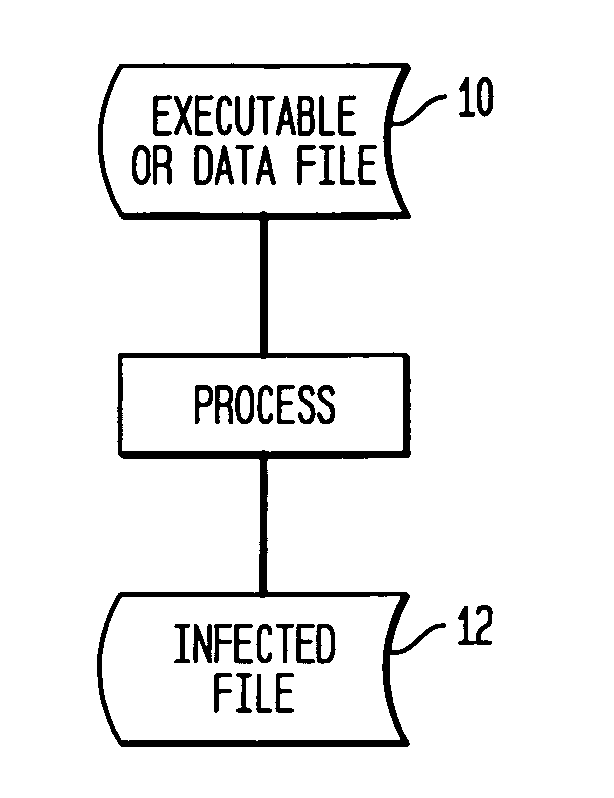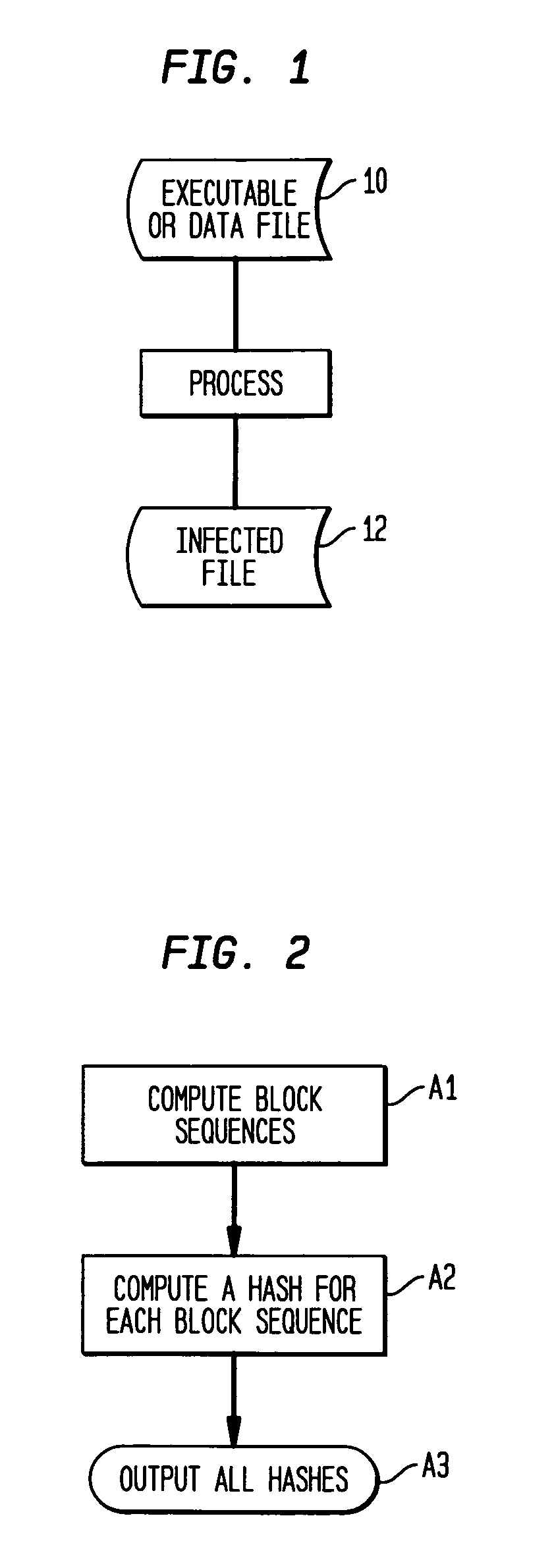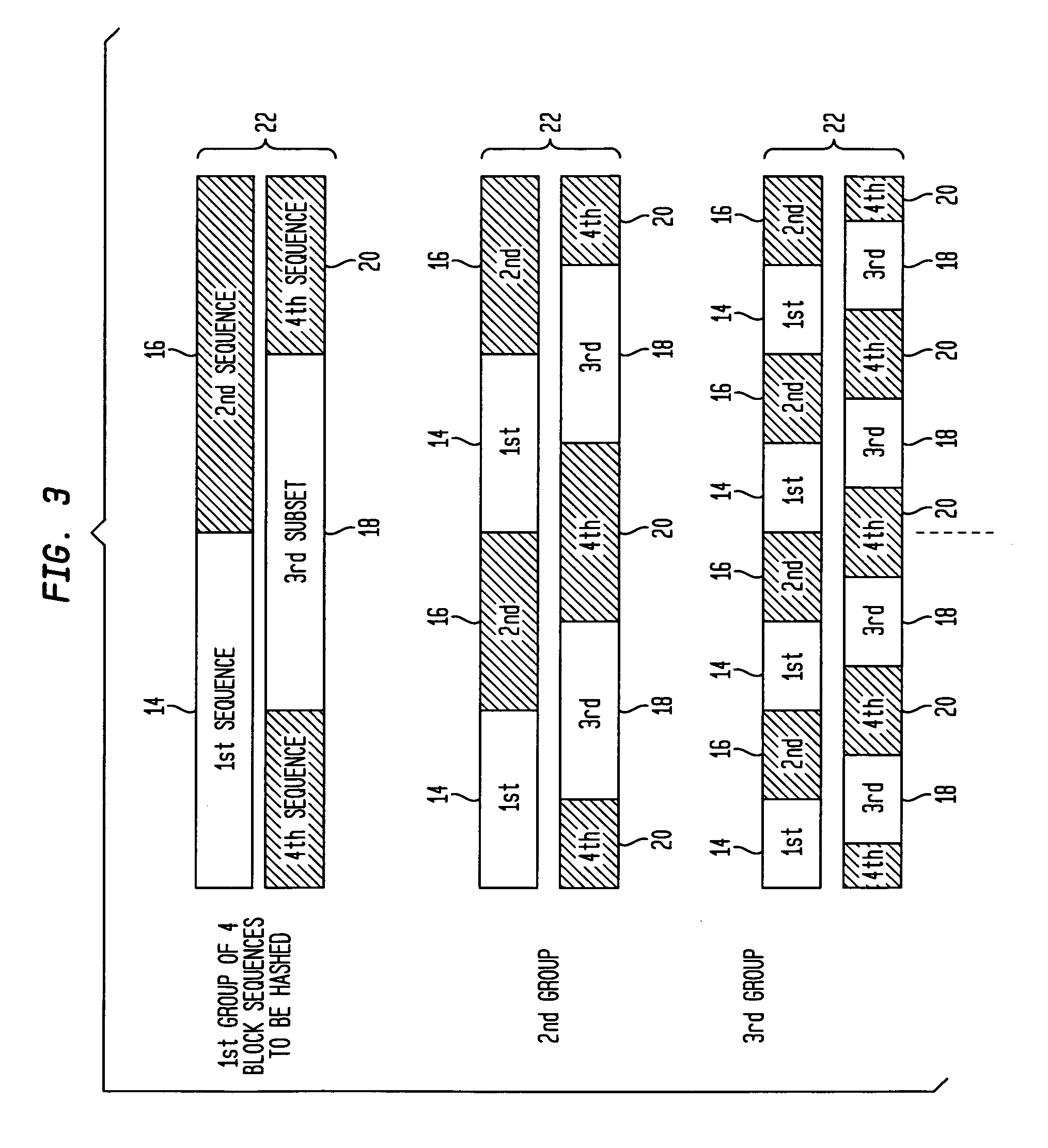Virus localization using cryptographic hashing
a cryptographic hashing and localization technology, applied in the field of software security, can solve problems such as easy defeat, virus detection, harmless infection,
- Summary
- Abstract
- Description
- Claims
- Application Information
AI Technical Summary
Benefits of technology
Problems solved by technology
Method used
Image
Examples
Embodiment Construction
[0025]A method to improve software security using virus localization is presented. The integrity checking principle described above can be extended so that not only are changes to the file are detected, but also these changes are localized within the file.
[0026]Methods for achieving virus localization can be designed for each infection technique, such as rewriting techniques, appending and prepending techniques, and each insertion or embedding technique. The inventive methods are based on repeated efficient applications of cryptographic hashing to various sequences of the set of file blocks, chosen according to codes that are specific to the infection technique. In all cases, the methods achieve satisfactory localization, that is, an area at most twice as large as the virus is identified in the corrupted file, and efficiency, that is, the hashes returned by the localizing hash functions are longer that those returned by a conventional cryptographic hash function by at most a logarit...
PUM
 Login to View More
Login to View More Abstract
Description
Claims
Application Information
 Login to View More
Login to View More - R&D
- Intellectual Property
- Life Sciences
- Materials
- Tech Scout
- Unparalleled Data Quality
- Higher Quality Content
- 60% Fewer Hallucinations
Browse by: Latest US Patents, China's latest patents, Technical Efficacy Thesaurus, Application Domain, Technology Topic, Popular Technical Reports.
© 2025 PatSnap. All rights reserved.Legal|Privacy policy|Modern Slavery Act Transparency Statement|Sitemap|About US| Contact US: help@patsnap.com



